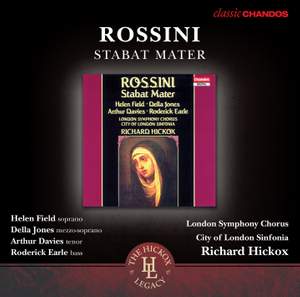After the enormous efforts that had gone into the completion of the opera Guillaume Tell, Gioachino Rossini entered into early semi-retirement. His setting of the Stabat Mater was thus written during a long period of relative inactivity. In fact, it was his first major composition for twelve years, and the last such he would ever attempt. It was commissioned in 1831 by Don Francisco Fernandez Varela, Knight of the Grand Cross of the Order of Charles III. Rossini accepted, albeit reluctantly, on the condition that it would never be published.
He began the work with the best of intentions, but half way through, due to illness, he had to enlist the help of an old friend, Giovanni Tadolini, whose contributions were kept stumm. Years later, a Parisian music firm made a successful bid for the manuscript with a view to publication. Understandably concerned that Tadolini’s contributions would come to light, Rossini prevented the original 1832 version from being published, and finally proceeded to replace Tadolini’s movements with four of his own. At its Paris premiere in 1842, the new version’s fusion of heartfelt solemnity and devotion with theatrical drama and joyous melodies was met with wild public enthusiasm.
It is this all-Rossini version that we find recorded here, performed by Richard Hickox and the City of London Sinfonia. They are joined by the London Symphony Chorus and four excellent soloists: Helen Field, Della Jones, Arthur Davies, and Roderick Earle.
When the recording was first released, American Record Guide wrote: ‘The choral work is splendid; the spacious, warm recording has caught it, the orchestra, and soloists in an almost ideal balance… this version must now be regarded as the finest available.’ The sentiments were echoed by HI FI News, which wrote that ‘once again, Hickox has produced a vibrant recording, full of exciting moments’.





